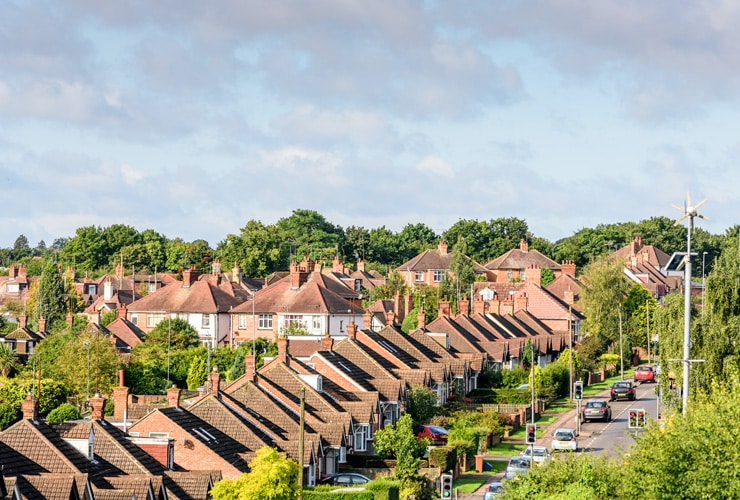Do it Yourself Conveyancing. A Guide for Investors and Buy-to-Let Landlords
When buying or selling a house it is usual to have a solicitor or conveyancer to handle the conveyancing process for you. However, it is possible to do your conveyancing yourself. Here we will look at what you need to know about doing DIY conveyancing.
What is Conveyancing?
In simple terms conveyancing is the legal process of transferring the ownership of property from one party (the seller) to another party (the buyer).
Key tasks in the conveyancing process include confirming that the seller actually owns the property, confirming specific details about the property, preparing and checking the legal contract of sale, exchanging contracts and legally completing the sale.
Other work involved in conveyancing includes checking the lease of a leasehold property, handling the money involved, registering the sale with the land registry and paying any taxes due.

Access our selection of exclusive, high-yielding, off-market property deals and a personal consultant to guide you through your options.
Can You Do Your Own Conveyancing?
You can do your own conveyancing yourself if you wish to, at least in theory. You do not need to be a qualified lawyer or licensed conveyancer to carry out conveyancing on your property sale or purchase.
It may not be possible to do DIY conveyancing if you are buying with a mortgage. Most mortgage lenders require that when a property is bought with a mortgage a solicitor or conveyancer who is on their approved panel must be involved.
Conveyancing on a leasehold property may be more problematic compared to that on a freehold property. This is because the details of the lease will need to be checked in addition to the other work involved with conveyancing.
DIY conveyancing will also be more complex if it is a linked transaction, ie. a purchase is being funded by a sale or if you are involved in a chain.
Just because it is possible to do DIY conveyancing does not necessarily mean it is a good idea.

The Pros of DIY Conveyancing
Before considering whether you should do your conveyancing yourself there are a number of advantages and disadvantages to bear in mind:
- Doing your own conveyancing and understanding the process can be very rewarding.
- You may be able to save money on legal fees compared to paying a solicitor or conveyancer to do the conveyancing.
- You may be able to do your own conveyancing more quickly, as you will only have one sale/purchase to deal with. Most solicitors and conveyancers have many transactions to deal with at the same time which can delay the process.
The Cons
- DIY conveyancing may not save as much money as you expect. You will still have some expenses to pay out. For example, paying for local searches and registering the transaction with HM Land Registry. Professional conveyancing fees are not always that expensive and savings can be made by shopping around.
- According to this report, you should expect conveyancing costs when using a solicitor or conveyancer to be around £600-£800 when selling a freehold property and around £1,000-£1,500 when buying a freehold property.
- It may not be that much quicker. It may take longer to do your own conveyancing as you will have to learn as you go.
- DIY conveyancing involves the risk of making a mistake, which may be difficult and expensive to correct. If you make a mistake in DIY conveyancing you pay have to pay a lawyer much more than the cost of the conveyancing to correct the error.
Solicitors and conveyancers have insurance in place which may cover the cost of rectifying any errors they make. But DIY conveyancers will not benefit from any insurance coverage.

A Step-by-Step Guide to DIY Conveyancing
Here is a simple guide to some of the different stages that are involved in conveyancing:
The Instruction Stage
The buyer’s and the seller’s solicitors or conveyancers – or the buyer and/or seller in the case of DIY conveyancing – make contact with each other and confirm the details of the sale. This will include the name and address of the buyer and seller, the address of the property and the price agreed. This information should be set down in the memorandum of sale which may be provided by the estate agent.
If you are intending to do your conveyancing yourself you will need to make this clear to the other party.
At an early stage you will also need to provide, or request, proof of identity and proof of funds.
Preparing the Contract Papers
The seller (or normally the seller’s solicitor or conveyancer when using one) will need to provide a draft contract of sale as part of a contract pack. This specifies the basis on which the transaction will be conducted.
The seller will need to provide official copies of the title or evidence from HM Land Registry that they are the legal owner of the property, including a title plan.
The seller will need to provide more detailed information about the property, plus information about any lease and the fixtures and fittings which are or are not included.
There are a number of standard template forms which The Law Society provides and which are widely used to provide this information. They can be purchased from legal stationery suppliers. Some of the main forms are:
Standard Conditions of Sale (5th Edition 2018)
- TA6 Property Information Form
- TA7 Leasehold Information Form
- TA10 Fittings and Contents Form
TA6, TA7 and TA10 Specimen forms are available, here.
The buyer normally drafts a legal deed of transfer which will subsequently be used to register the sale with HM Land Registry.
Handling Pre-Contract Enquiries
The buyer (or the buyer’s solicitor or conveyancer when using one) will need to review the contract papers that have been received from the seller. They can then raise any pre-contract queries they have. This might include queries about the property, the title and the contract itself.
Conducting Searches
The buyer will need to order local searches on the property. These cover issues such as access to the property, planning and development issues, what utilities it is connected to, checks on environmental issues such as flood risk and a mining report if in a former mining area.
The buyer can then take up any issues these searches raise with the seller.
Surveys and Mortgages
At this stage, the buyer can have a survey conducted on the property if they require one and, again, raise any issues this identifies with the seller.
Both buyer and seller will need to liaise with any mortgage lenders involved. If the property is currently subject to a mortgage the seller will need to obtain a settlement balance, arrange to redeem the mortgage when the sale completes and provide the buyer with an undertaking this will be done.
Exchanging Contracts
Once the buyer is satisfied with the contract, the title and the information about the property exchange of contracts can take place. This involves both buyer and seller signing a copy of the contract documents and then exchanging their copy with the other party. This makes the sale final.
At this stage, the buyer will need to pay a deposit to the seller. Normally this will be 10% of the price agreed.
In the exchange of contracts, a date for completion of the contract will need to be agreed upon. This can be any date which is acceptable to both buyer and seller and is typically within 1-2 weeks of the exchange of contracts.
Completion
On completion day the buyer will need to transfer the agreed purchase price (less the deposit already paid) to the seller. The seller will then need to send the title deeds and signed deed of transfer to the buyer.
The buyer can then take possession of the property. The seller will need to hand the keys over to the buyer who can then move in, if they wish to do so. The sale/purchase is then legally completed.
Registering the Property Purchase with HM Land Registry
Following completion, there will be further post-contract work to do.
The new owner of a property must apply to HM Land Registry to change the registered owner’s name. This is done by completing an Application to Change the Register form (AP1) and a Transfer of Whole of Registered Title form (TR1) and completing a certificate of identity.
There is a fee of between £45 and £305 depending on the property’s value and the way the application is made.
More information is available from:
Paying Stamp Duty Land Tax
Stamp Duty Land Tax or SDLT is payable when a property is bought or transferred unless the sale price is under the SDLT threshold (currently £250,000) or the buyer has an exemption, eg. they are a first-time buyer, depending on value.
SDLT payments and returns must usually be made within 14 days of the effective transaction date. This is usually the date of transaction completion but can be earlier in some cases.
More information is available from:
NB. Scotland and Wales have different Stamp Duty systems.
Paying Capital Gains Tax
Depending on the circumstances of the sale the seller may be liable to pay Capital Gains Tax or CGT. (CGT is not payable when selling your own main home.)
More information is available from:
In summary, although it is perfectly possible to do your own conveyancing on a property sale or purchase you should carefully consider whether it is a good idea or not before you start. If you are unclear about what is involved you should take expert legal advice.
